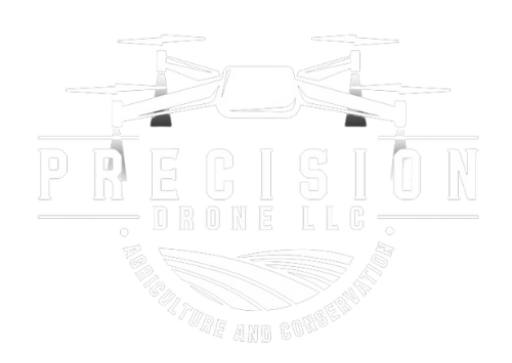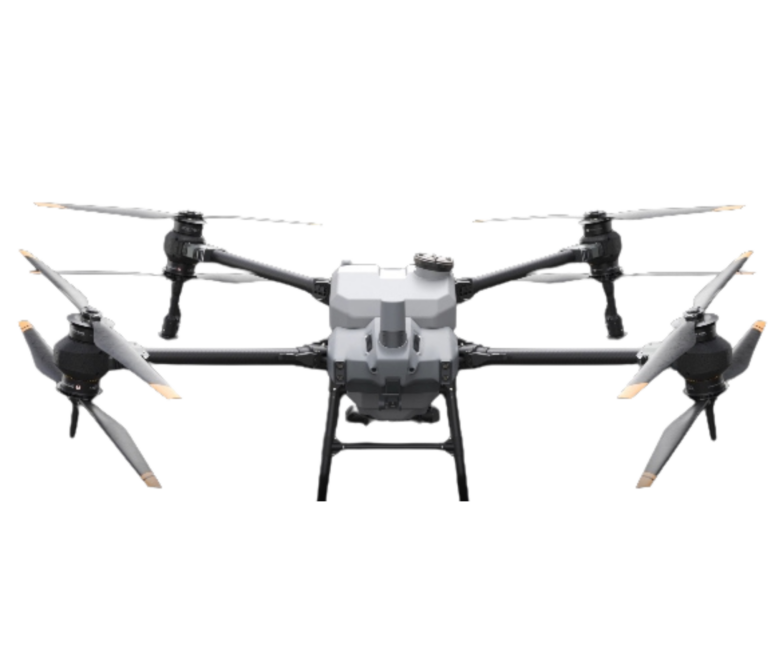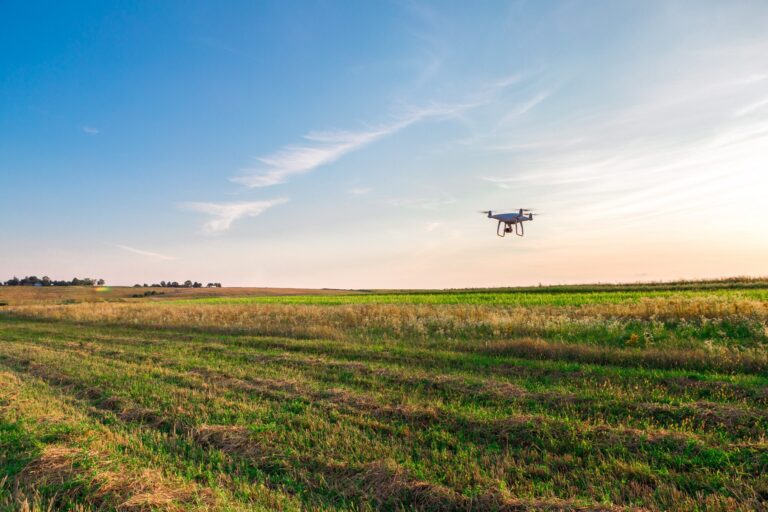The Future of Agriculture: How Our Drone Services Enhance Efficiency and Sustainability
In an era where technological advancements are reshaping industries, agriculture stands at the forefront of this transformation with the integration of drone technology. At Precision Drone LLC, we are pioneering this change by offering agricultural drone services that enhance both efficiency and sustainability. Our innovative aerial solutions are designed to provide precise crop monitoring, enable targeted applications, and conduct comprehensive surveys, optimizing resource management and boosting productivity. By focusing on the unique needs of Michigan’s agricultural community, we deliver services that not only improve crop health but also promote environmental stewardship. Join us as we explore how our agriculture drone services are setting new standards in farming and conservation.
Revolutionizing Agricultural Practices
Agricultural practices are undergoing a significant transformation with the introduction of drone technology. This section explores how drones are revolutionizing traditional farming methods, providing farmers with advanced tools to enhance productivity and sustainability.
Precision Monitoring with Drones
Precision monitoring has become an integral part of modern agriculture, offering farmers the ability to assess crop health with unparalleled accuracy. Drones equipped with advanced sensors capture high-resolution images, allowing for detailed analysis of fields.
With this data, farmers can identify issues such as pest infestations or nutrient deficiencies much earlier than before. This early detection enables targeted interventions, reducing the need for widespread chemical applications.
Furthermore, drones can cover large areas quickly, providing comprehensive insights into crop conditions. This efficiency saves time and labor costs, allowing farmers to allocate resources more effectively.
Precision monitoring also contributes to improved yield predictions, helping farmers plan better for market demands. By embracing this technology, agricultural operations can become more responsive and adaptive to changing environmental conditions.
Targeted Applications for Crop Health
Drones have transformed the way farmers approach crop health management. By utilizing drones, farmers can apply fertilizers, pesticides, and other treatments with pinpoint accuracy. This targeted approach ensures that only the necessary areas receive treatment, minimizing waste and reducing costs.
-
Identify Needs: Drones help in detecting areas requiring intervention.
-
Plan Application: Create precise maps for targeted applications.
-
Execute with Precision: Use drones to apply treatments directly.
This method not only enhances efficiency but also promotes environmental sustainability. By reducing the amount of chemicals used, drones help lessen the impact on surrounding ecosystems and waterways.
Moreover, targeted applications can lead to healthier crops and improved yields, providing a substantial return on investment for farmers. The ability to customize treatment plans based on real-time data is a game-changer in modern agriculture.
Comprehensive Surveying Techniques
Drones have revolutionized surveying techniques in agriculture, offering a comprehensive overview of the land. Equipped with LiDAR, infrared, and thermal imaging technologies, drones provide detailed topographical maps and data.
These surveys help farmers understand the nuances of their land, including variations in terrain and soil health. With this information, they can implement strategies to optimize planting, irrigation, and harvesting.
Additionally, drones can perform regular surveys to monitor changes over time. This continuous data collection is invaluable for tracking the effectiveness of agricultural practices and making informed decisions.
By utilizing drones for comprehensive surveys, farmers gain a holistic understanding of their fields. This insight allows for more precise planning and management, ultimately leading to increased productivity and sustainability.
Enhancing Sustainability in Agriculture
Sustainability is a key focus in agriculture today, and drone technology is playing a pivotal role. This section delves into how drones enhance resource management, reduce environmental impact, and promote biodiversity conservation.
Resource Management with Drone Technology
Resource management has been greatly enhanced by drone technology, offering precise insights into water usage, soil health, and crop needs. Drones provide real-time data that helps farmers make informed decisions about resource allocation.
With aerial imagery, farmers can identify areas of over- or under-irrigation, allowing them to adjust water usage accordingly. This ensures optimal hydration levels, enhancing crop growth while conserving water resources.
Similarly, drones aid in monitoring soil health, identifying areas requiring fertilization. By targeting only necessary areas, farmers can reduce fertilizer usage, cutting costs and minimizing environmental impact.
Incorporating drone technology into resource management strategies leads to more efficient and sustainable farming practices. The ability to optimize resource allocation not only benefits the environment but also boosts agricultural productivity and profitability.
Reducing Environmental Impact
Drones are instrumental in reducing the environmental impact of farming practices. By enabling precise applications and monitoring, drones help minimize the use of chemicals and resources.
This precision reduces runoff and leaching into local waterways, protecting aquatic ecosystems. Additionally, drones can be used to monitor environmental indicators, such as soil erosion and habitat changes, providing valuable data for conservation efforts.
With reduced chemical use, drones also help preserve soil health and biodiversity. Healthier soils support diverse ecosystems, promoting long-term sustainability in agriculture.
By adopting drone technology, farmers can implement practices that align with environmental conservation goals. This not only enhances farm sustainability but also contributes to broader ecological preservation efforts.
Promoting Biodiversity Conservation
Drones play a crucial role in biodiversity conservation within agricultural landscapes. By providing detailed aerial imagery, drones enable farmers to identify and protect vital habitats and corridors for wildlife.
With this technology, farmers can implement strategies to minimize habitat disruption. For example, drones can detect areas suitable for creating buffer zones, which protect native species and promote biodiversity.
Additionally, drones monitor changes in land use and habitat conditions over time, offering insights into the impact of farming practices on local biodiversity. This data supports informed decision-making and helps farmers adopt more sustainable practices.
Promoting biodiversity through drone technology not only benefits wildlife but also enhances farm resilience. Diverse ecosystems contribute to healthier soils and crops, improving overall agricultural sustainability.
The Economics of Drone Services
Understanding the economics of drone services is vital for farmers considering their adoption. This section explores pricing, cost-benefit analyses, and financial incentives available for integrating drone technology in agriculture.
Agriculture Drone Services Pricing
The cost of agriculture drone services varies depending on several factors, including the type of service, equipment used, and area covered. Typically, pricing models include per-acre rates, hourly rates, or flat fees for specific services.
-
Per-acre rates: Common for services like crop monitoring and surveying.
-
Hourly rates: Applied for customized or complex services.
-
Flat fees: Offered for comprehensive packages or bundled services.
Farmers should evaluate their specific needs to determine the most cost-effective pricing model. Additionally, many providers offer flexible pricing options to accommodate different budgets and requirements.
Investing in drone services can lead to significant savings in resource management and yield improvements. Understanding the pricing structure helps farmers make informed decisions about integrating this technology into their operations.
Cost-Benefit Analysis for Farmers
Conducting a cost-benefit analysis is essential for farmers considering drone technology. This analysis weighs the initial investment and operational costs against the potential benefits, such as increased yields and reduced resource usage.
-
Identify Costs: Include equipment, service fees, and maintenance.
-
Estimate Benefits: Consider yield increases, resource savings, and labor reductions.
-
Compare Outcomes: Evaluate the return on investment over time.
Many farmers find that the benefits of drone technology, such as improved efficiency and sustainability, outweigh the costs. Additionally, drones can enhance decision-making and provide competitive advantages in the market.
By performing a thorough cost-benefit analysis, farmers can make strategic decisions that align with their financial goals and sustainability objectives.
Financial Support and Incentives
There are various financial supports and incentives available to farmers integrating drone technology. Government programs, grants, and subsidies often support technological advancements in agriculture.
-
Grants: Available for research and development or sustainable practices.
-
Subsidies: Offered to offset costs of adopting new technologies.
-
Tax incentives: May apply for investments in environmentally-friendly equipment.
Farmers should explore these options to reduce the financial burden of adopting drone technology. Collaborating with local agricultural agencies or industry groups can provide access to resources and guidance.
Taking advantage of financial support not only aids in the initial investment but also promotes long-term sustainability and innovation in farming practices.
Case Studies in Michigan
Michigan provides a fertile ground for exploring the impact of drone technology in agriculture. This section presents case studies highlighting successful crop management, conservation efforts, and client testimonials.
Successful Crop Management Examples
In Michigan, several farms have successfully integrated drone technology for crop management. These case studies demonstrate the tangible benefits that drones can offer.
At Green Acres Farm, drones have been used to monitor corn growth, identify pest outbreaks, and optimize irrigation schedules. This has resulted in a notable increase in yield and a decrease in chemical usage.
-
Improved Yields: 15% increase in corn production.
-
Reduced Chemicals: 20% decrease in pesticide application.
-
Water Savings: Optimized irrigation reduced water use by 30%.
These successes highlight the potential of drones to revolutionize crop management, offering farmers a competitive edge and contributing to sustainable agriculture.
Conservation Efforts and Natural Resource Management
Drones have played a pivotal role in Michigan’s conservation efforts and natural resource management. By providing detailed aerial data, drones support initiatives aimed at preserving local ecosystems.
At Lakeview Farm, drones are used to monitor wetland conditions and track wildlife movements. This data informs conservation strategies and helps maintain the health of these critical habitats.
Furthermore, drones assist in the management of natural resources, such as forests and water bodies. By identifying areas of concern, they enable proactive measures to protect and sustain these ecosystems.
The integration of drone technology in conservation efforts not only benefits the environment but also supports the long-term viability of agricultural lands.
Client Testimonials and Success Stories
Farmers in Michigan have shared success stories and testimonials about the positive impact of drone technology on their operations.
“Drones have transformed our approach to farming. The insights we gain from aerial surveys are invaluable.” – John Smith, Smith Family Farm
“With drones, we’ve improved our crop yields and reduced our environmental footprint. It’s a win-win.” – Emily Jones, Jones Organic Farm
These testimonials reflect the broader trend of farmers embracing drone technology for its efficiency and sustainability benefits. The positive feedback underscores the transformative potential of drones in agriculture.
The Future of Drone Technology in Agriculture
Drone technology is continually evolving, offering new opportunities for the agricultural sector. This section explores innovations on the horizon, expanding services, and the role of regulation and policy.
Innovations on the Horizon
The future of drone technology in agriculture promises exciting innovations. Advances in artificial intelligence and machine learning are enhancing drone capabilities, enabling more sophisticated data analysis and decision-making.
Drones are becoming more autonomous, with improved flight times and range. This allows for more extensive coverage and detailed monitoring of large agricultural areas.
Additionally, new sensor technologies are emerging, providing enhanced data on soil health, crop conditions, and environmental factors. These innovations will enable even more precise and efficient farming practices.
The integration of drones with other technologies, such as satellite imagery and IoT devices, is also on the rise. This convergence will create comprehensive agricultural management systems that drive productivity and sustainability.
Expanding Services and Capabilities
The range of services and capabilities offered by drone technology is expanding rapidly. Beyond traditional applications, drones are being used for innovative purposes such as crop pollination and livestock monitoring.
Service providers are developing customized solutions tailored to specific crops and regional needs. This flexibility allows farmers to leverage drone technology in ways that best suit their operations.
Moreover, advancements in software platforms are enabling seamless integration of drone data with farm management systems. This facilitates real-time decision-making and enhances the overall efficiency of farm operations.
As the capabilities of drones continue to grow, they will become an indispensable tool for modern agriculture. The potential for innovation and customization is vast, offering endless possibilities for the agricultural sector.
The Role of Regulation and Policy
The advancement of drone technology in agriculture is heavily influenced by regulation and policy. Governments are developing frameworks to ensure the safe and effective use of drones in farming.
Regulations govern aspects such as flight operations, data privacy, and environmental impact. Compliance with these regulations is essential for farmers and service providers to operate legally and responsibly.
Policy initiatives also promote the adoption of drone technology by offering incentives and support for research and development. These efforts aim to encourage innovation while safeguarding public and environmental interests.
As the regulatory landscape evolves, collaboration between stakeholders is crucial. By working together, industry leaders, policymakers, and farmers can ensure that drone technology continues to advance and benefit the agricultural sector.





